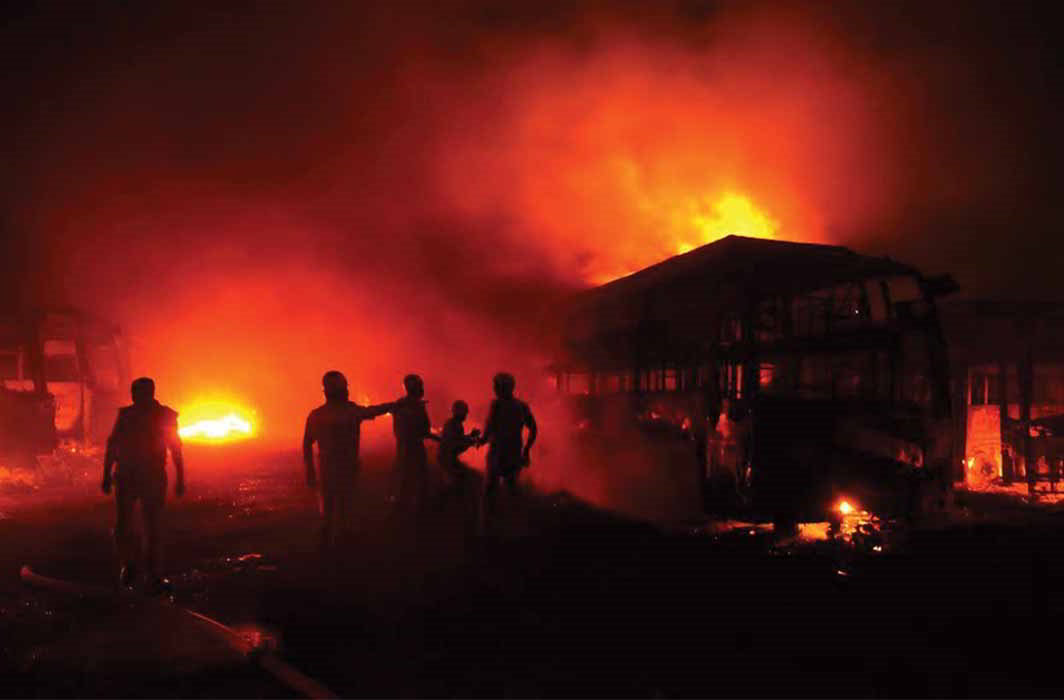
The protests at Marina Beach were not just about the ban on this sport. It was a reassertion of Tamil rights and a platform for releasing pent-up anguish and frustration over other issues as well
~By Ajith Pillai
Those not aware of the complex socio-cultural dimensions of Tamil identity politics may find it difficult to comprehend how the protests against the Jallikattu ban could have metamorphosed so fast into a mass movement of sorts. Of course, it did not sustain long enough for it to have a lasting impact, but it sent out a strong and larger message to the central and state governments that the genuine concerns of the common citizenry cannot be dismissed or ignored. It was, as some commentators put it, the voice of the people that resonated from the Marina in Chennai and other cities in the state.
It is now apparent that the protests were not just about Jallikattu. In fact, many who thronged Marina Beach may perhaps never have witnessed a bull-taming event or undergone the pilgrimage to Alanganallur in south Tamil Nadu, famous for hosting the sport every year during Pongal, the harvest festival. The apex court order banning the sport merely provided the trigger and the platform for raising several other concerns and for pent-up public anguish and frustration to be expressed.
DIVERSE ISSUES
The protesters were not activists of political parties. They were students, professionals, retired folk…and they seemed angry. They were agitated about the adverse drought situation and farmers’ distress, unemployment, demonetisation, the state being repeatedly slighted by Delhi, atrocities against Lankan Tamils and what have you. Some even expressed anguish and insecurity following the death of Jayalalitha. Their take: there was no powerful leader left to stand up to the centre and fight for the rights and honour of Tamils so the people had no choice but to come out on the streets.
Jallikattu acted as a lightning rod that attracted various shades of disaffection and dissent. Actor Kamal Hassan articulated the general mood that prevailed on the Marina: “There is an accusation against students that they protested only for Jallikattu. This movement is not just about Jallikattu. Jallikattu is only a symbol of a much larger discontent. This agitation came after decades of various kinds of anger.”

However, not all demands of the protestors can be endorsed, including the call for Tamil Nadu to secede from the Indian Union. The protest and its success in revoking the Jallikattu ban, some fear, might revive Tamil chauvinism and the dangerous and divisive identity politics with its inherent anti-North India texture. The prevailing public sentiment also runs the risk of being politically exploited by vested politicians.
INFLICTING CRUELTY
But how could banning of a sport unleash so much frustration and anger? Jallikattu, to say the least, inflicts cruelty on an animal, in this case the bull, which is allegedly teased and provoked by being prodded with sticks and scythes and force-fed alcohol before being released into a crowd. A team of participants are then supposed to subdue the enraged animal and bring it to the ground.
That Jallikattu is cruel cannot be denied whatever its supporters may say about the veneration in rural Tamil Nadu of the Kangayam breed of the bull used in the sport. Neither is it an innocent Eru (bull) thazhuvuthal (hugging) festival as it is projected to be. There is overwhelming photographic and video evidence which proves the contrary.
Earlier, bans imposed on the sport did not provoke the scale of public outcry seen this time. So, what was different now? Many believe that the Jallikattu ban came too close to Karnataka refusing to release Cauvery waters to Tamil Nadu despite an apex court order. This agitated many and the big question on the minds of many a protestor was this: “What did the centre or the Supreme Court do when Karnataka refused our drought-hit farmers water? So, why should we Tamizhs take it lying down when it comes to Jallikattu? Why should we allow anybody to mess around with our culture and tradition? Aren’t we being taken for granted?”
Jallikattu acted as a lightning rod that attracted various shades of disaffection and dissent. Actor Kamal Hassan articulated the general mood that prevailed on the Marina: “There is an accusation against students that they protested only for Jallikattu. This movement is not just about Jallikattu. Jallikattu is only a symbol of a much larger discontent. This agitation came after decades of various kinds of anger.”
VIGOROUS CAMPAIGN
Equating the ban on Jallikattu as an affront to Tamizh identity and pride was not initially a spontaneous construct, although the protests were an impulsive reflex. In fact, a vigorous campaign was first launched in the local press and social media against the court order which had the blessings of the economically and politically powerful Thevar community who own the pedigree Kangayam bulls and organises the events.
An SOS was sent out that Jallikattu had to be protected to preserve Tamil pride. The Supreme Court ban would have to be opposed, not by employing legal process but through mass protests. The line between Thevar self-esteem and Tamil honour soon blurred with popular movie stars like Kamal Hassan and Rajnikanth opposing the ban. Very soon, it became politically correct to be with the protestors than be left defending animal rights activists who were quickly labelled as “American agents”.
More than anything else, the protests reminded old-timers of the 1965 anti-Hindi agitations and rekindled interest in the Dravida movement. For others, it was a reassertion that non-violent protests still remain a powerful tool in the hands of the people.
Lead picture: Students and youth staging a demonstration at Marina Beach, Chennai, demanding lifting of the ban on Jallikattu. Photo: UNI

